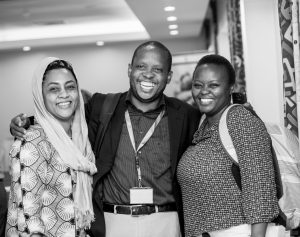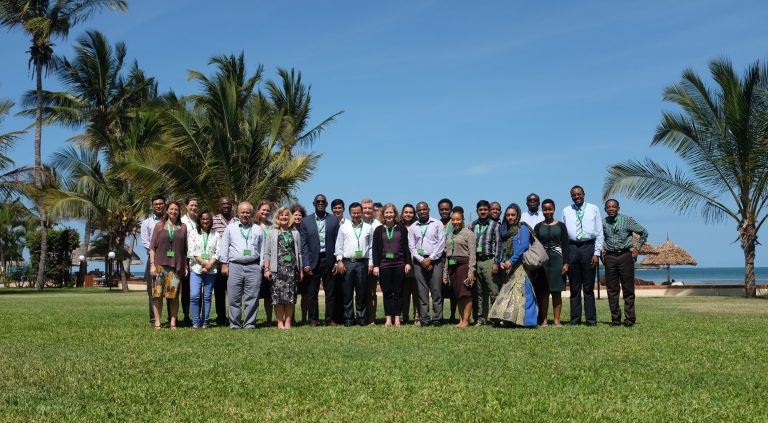ENAP Metrics “ENAP Research Implementation Planning Workshop for Facility-based Observational Study in Bangladesh, Nepal and Tanzania” took place from 5th to the 8th of December in White Sands Hotel, Dar es Salaam, Tanzania.
Background
ENAP metrics* team and research partners are continuing work towards implementing the first step on the measurement improvement roadmap related to facility-based testing of coverage indicators for selected interventions for Every Newborn Action Plan (ENAP) and Strategies Toward Ending Preventable Maternal Mortality (EPMM).
Following the ENAP Research Design Workshop for Facility Based Metrics held in April 2016, the ENAP metrics facility-based research protocol and data collection tools were widely reviewed by facilitators and participants, a workshop report was published and applications were approved by multiple Institutional ethical review boards, at LSHTM and in the 3 study countries of Bangladesh, Nepal and Tanzania.
Following IRB approvals, the formative phase of the facility-based research was launched in autumn of 2016. Key aspects of the formative phase involved health facility assessments and data flow analyses in the six study facility sites, qualitative pre-piloting of the tools and a forthcoming observer training. In addition site visits were completed to all six health facility sites coordinated by research partners International Centre for Diarrhoeal Disease Research, Bangladesh (ICDDR,B), UNICEF Nepal and IFAKARA in Bangladesh, Nepal and Tanzania respectively. National study launch meetings were also held in each of the three study countries with key sector actors, including the Ministries, UNICEF, WHO, Saving newborn Lives and professional associations.
Workshop overview
Representatives and experts from the three study countries together with the LSHTM ENAP Metrics Team met at the lovely White Sands Hotel, Dar es Salaam, Tanzania from the 5th to 8th of December to finalise the data collection process and tools and agree on the next steps for 2017.
The main aim of this workshop was to finalise the procedures related to data collection, including finalisation of the tools, mobile app development and training of data collectors.
The 4 day workshop agenda was structured with plenary and working group sessions working towards the following outputs:
- Agreement on observers’ tools, data extraction system and implementation plan
- Agreement maternal recall pre-discharge survey tool and plan
- Finalisation tools and plan for data collection
- Plan for innovations regarding birthweight and CRVS to close gap between these measures and facility birth coverage in the sites
- Work plan for 2017 for each country team and overall
- Informal launch of Tanzanian study with key national technical leaders
Discussions were plentiful and contributed towards the shaping of the data collection tools and procedures. The working groups and pre-piloting provided helpful feedback for the Labour & Delivery and KMC observer checklists and the maternal recall pre-discharge survey. The ACS verification tool was discussed, and it was decided that an inpatient neonatal infection verification tool would now be developed instead of observer checklist. Lead technical working groups were formed for finalisation of all tools in the New Year, and it was decided that the development of the mobile app would be led by icddr,b’s skilled app development team. An overview of the forthcoming training of data collectors was presented and innovative ideas for facility-based birth registration and birth weight improvement initiatives were also identified.
On the last day of the workshop, an informal launch of Tanzanian study was held with key national technical leaders. Overviews of the research and country contexts were presented, which was followed by a lively talk show panel of experts involved in the study.
Though the four day workshop agenda was packed, time was set aside for a lovely team boat trip late Wednesday afternoon to the nearby tropical Mbudya Island.
Next steps for ENAP metrics facility based study …
Following the workshop, working groups met in the New Year to finalise the study’s data collection tools and the icddr,b team is now working on developing the structure of the mobile app. The app technical leads from the three countries are meeting in Bangladesh this week during the beginning of April for an initial training, which will then be followed by the Bangladesh app team members conducting training in-country with the Tanzania and Nepal teams.
Recruitment for data collectors is underway in the three countries and comprehensive training materials are being drafted with helpful input from technical working group and JHPIEGO. It is projected that the data collector training will take place in May with data collection to start in June. Stay tuned as the research protocol and all tools will be available soon on the *new* ENAP metrics webpages on Healthy Newborn Network!
Special thanks to IFAKARA and Muhimbili University of Health and Allied Sciences (MUHAS) for hosting the workshop, Children’s Investment Fund Foundation (CIFF) for funding facility-based testing in Bangladesh and Tanzania and to UNICEF Nepal for supporting the work in Nepal.
More information
Every Newborn Action Plan Metrics: Design Workshop for Facility-based Testing of Coverage Metrics
WHO technical consultation on newborn health indicators: every newborn action plan metrics
Count every newborn; a measurement improvement roadmap for coverage data
* The ENAP Metrics working group is co-chaired by the World Health Organization (WHO) and London School of Hygiene & Tropical Medicine (LSHTM), and has a mandate to work with multiple partners to ensure the milestones in the Action Plan related to metrics are delivered on in time, and tools and learning are widely shared and available in open access for use in countries.
